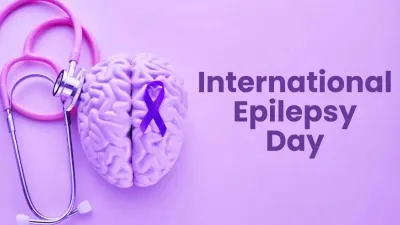Context:
International Epilepsy Day (IED) is celebrated on the 2nd Monday of February every year since 2015.
More on the News
- This year’s Theme is “MyEpilepsyJourney”. The theme encourages individuals to share their personal experiences with epilepsy.
- It is an annual awareness-raising initiative organised by the International Bureau for Epilepsy (IBE) and the International League Against Epilepsy (ILAE).
- The event aims to bring together patients suffering from epilepsy and create a community in which the awareness of its epidemiological profile, the condition, its diagnosis, and treatment is discussed.
- It serves as a key initiative for the epilepsy community to drive the implementation of the World Health Organisation’s [WHO] 10-year Intersectoral Global Action Plan on Epilepsy and other Neurological Disorders (2022-2031) or IGAP.
IGAP Strategic Objectives:
- Global target 5.1: By 2031, countries will have increased service coverage for epilepsy by 50% from 2021 levels.
- Global target 5.2: By 2031, 80% of countries will have developed or updated their legislation to promote and protect the human rights of people with epilepsy.
According to the World Health Organization (WHO), around 50 million people worldwide are affected by epilepsy, with 80% residing in low- and middle-income countries.
Research suggests that with proper diagnosis and timely treatment, nearly 70% of epilepsy cases can be effectively managed, allowing individuals to lead seizure-free lives.
About Purple Day (March 26)
- Started in 2008 by Cassidy Megan, a young girl from Canada who wanted to spread awareness about epilepsy.
- Recognized globally, individuals wear purple to show support for epilepsy awareness.
- Purple Day and World Epilepsy Day are both related, as both events aim to raise awareness about epilepsy, but they are observed on different dates and have different origins:
Key Difference:
- Purple Day is more of a grassroots awareness campaign, whereas International Epilepsy Day is a structured event backed by global organizations.
- Both focus on education, reducing stigma and supporting those with epilepsy.

